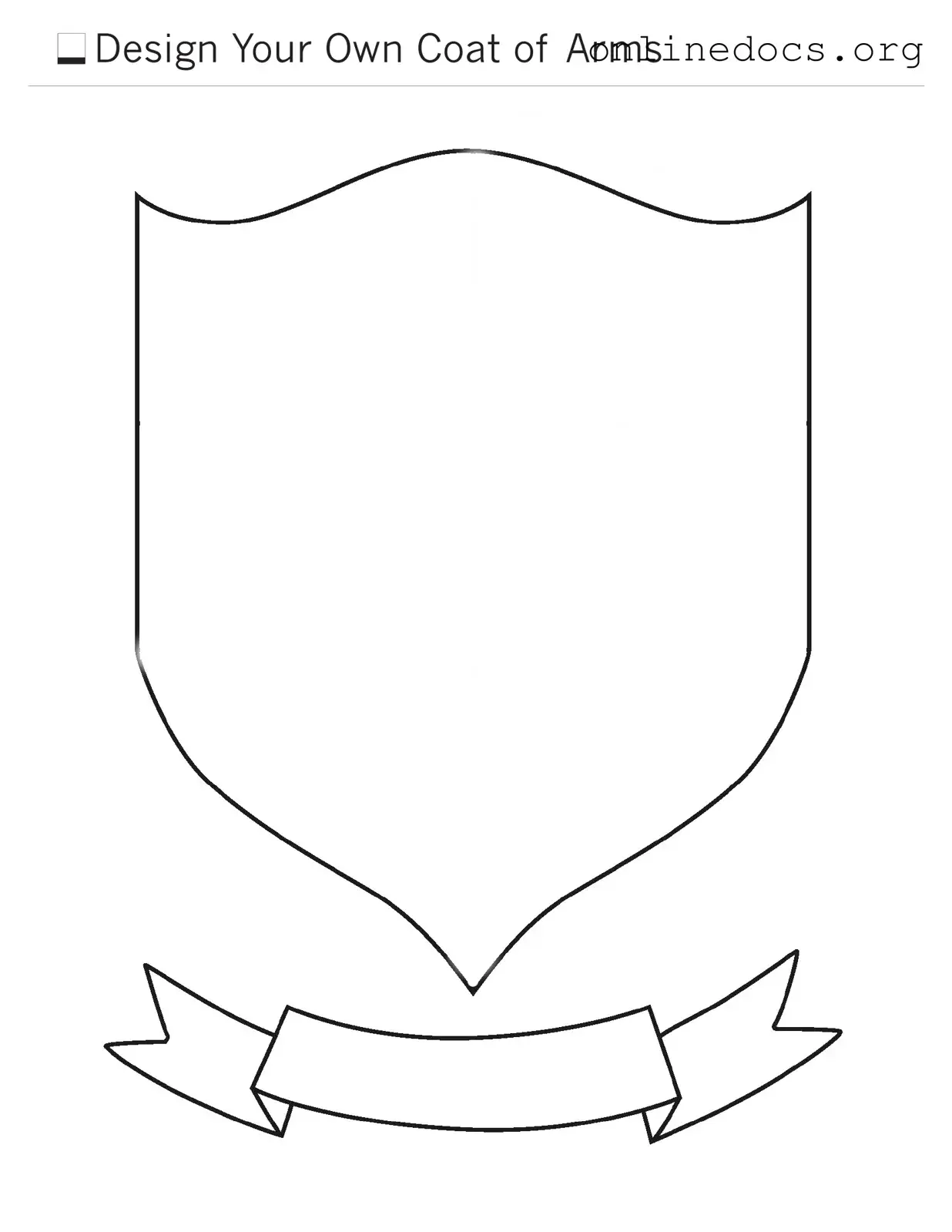The Coat of Arms form is similar to the Family Crest application, as both documents serve to establish and recognize a family's lineage and heritage. A Family Crest typically features symbols and colors that represent the family's history, values, and achievements. Like the Coat of Arms, it is often used in ceremonial contexts and can be displayed on various items, including stationery and home decor. Both documents require careful research into the family’s background to ensure accuracy and authenticity.
Another document akin to the Coat of Arms form is the Genealogy Report. This report compiles detailed information about a family’s ancestry, including names, dates, and places. While the Coat of Arms form focuses on visual representation, the Genealogy Report dives deep into the familial connections and historical context. Together, these documents provide a fuller picture of a family’s heritage, appealing to those interested in their roots.
In circumstances where guardianship decisions are necessary, it may be important to have a legal framework in place that allows another adult to act on behalf of a child. For those considering this option, the California Power of Attorney for a Child form can be a vital resource, enabling parents to delegate authority effectively. To learn more about this essential document, visit https://californiapdfforms.com/power-of-attorney-for-a-child-form.
The Heraldic Registration application shares similarities with the Coat of Arms form, as both involve the official recognition of symbols representing a family or organization. Heraldic Registration is often required to ensure that the symbols are unique and not already in use by another entity. This process adds a layer of protection and legitimacy to the Coat of Arms, making it an important step for families wishing to preserve their identity.
In addition, the Emblem Registration form is closely related to the Coat of Arms form. Emblems, like coats of arms, serve as visual identifiers for organizations, families, or causes. They often carry significant meaning and can be used in various contexts, from branding to ceremonial occasions. The process of registering an emblem ensures that it is protected under intellectual property laws, similar to how a Coat of Arms is safeguarded.
The Certificate of Authenticity for Artifacts is another document that parallels the Coat of Arms form. This certificate verifies the legitimacy of historical items, including those that may feature a family’s coat of arms. Just as the Coat of Arms represents a family’s identity, the Certificate of Authenticity affirms the value and provenance of an item. Both documents emphasize the importance of heritage and the preservation of history.
The Family History Book can also be compared to the Coat of Arms form. This book serves as a comprehensive record of a family's history, detailing stories, photographs, and significant events. While the Coat of Arms provides a visual representation, the Family History Book offers a narrative that brings the family’s past to life. Together, they create a rich tapestry of identity that can be passed down through generations.
Moreover, the Legacy Planning Document shares similarities with the Coat of Arms form, as both focus on the preservation of a family's legacy. Legacy Planning involves outlining how a family’s assets and values will be passed down to future generations. The Coat of Arms acts as a symbol of that legacy, representing the family’s history and values. Both documents encourage families to think about their future and how they wish to be remembered.
Lastly, the Historical Society Membership application is akin to the Coat of Arms form in that both promote the preservation of history and culture. Membership in a historical society often involves a commitment to understanding and celebrating one’s heritage. By applying for a Coat of Arms, families actively participate in the preservation of their own history, aligning with the mission of many historical societies to safeguard cultural narratives for future generations.
